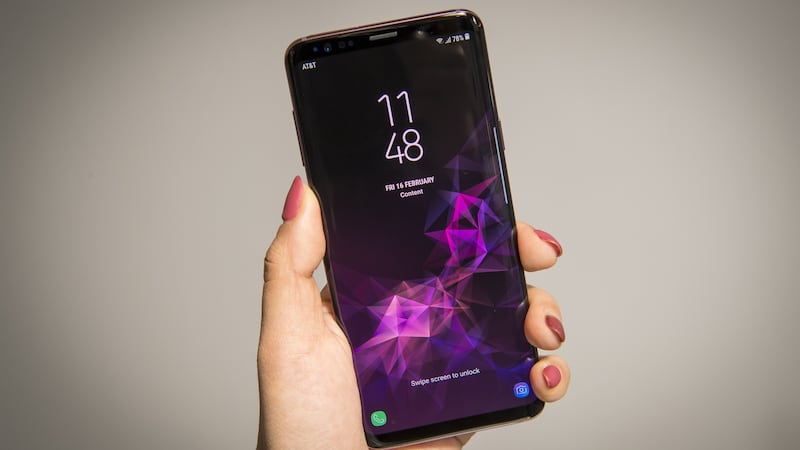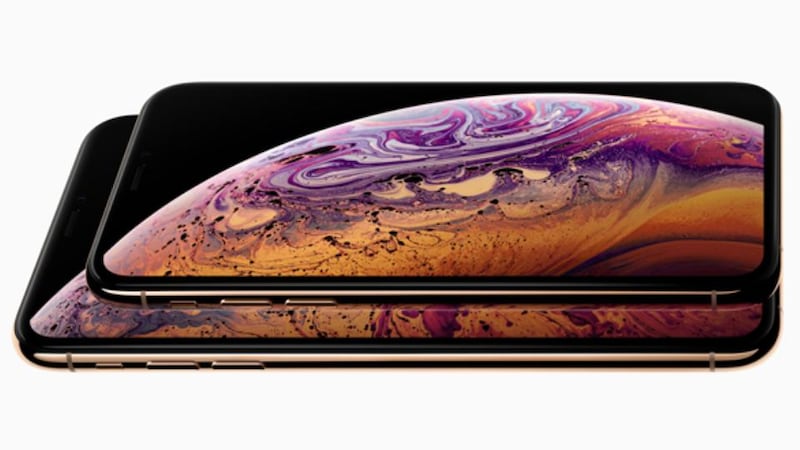In the market for a new smartphone? The latest handsets have hit the market, meaning all you have left to do is choose which smartphone maker's coffers you want to enrich. So in the battle between the iPhone XS Max, the Samsung Galaxy S9+, the Sony Xperia XZ2 and the Huawei P20 Pro, which one rules them all?
LOOKS
The old adage of “never judge a book by its cover” is an admirable sentiment when applied to people but less useful for a piece of technology you are spending several hundred euro on. If you are paying out the equivalent of a mortgage payment for your phone, it should at least be something you aren’t embarrassed to fish out of your pocket.
Having said that, the first thing most people do when they get their shiny new phone is put it into a protective case, thereby covering up that lovely exterior.
But on pure out-of-the-box good looks, which of the flagship phones catches your eye? There is something positive to be said about all three. The Huawei P20 Pro has a fairly standard design, but has that nice gradient colour on the back. The idea that your phone has to be white, black or grey is dead. The P20 Pro comes in the usual colours but also offers a gradient blue colour it calls Twilight, which is a little out of the ordinary. The bezels are minimal, with Huawei going for an iPhone-like notch in the screen.

The iPhone Xs Max looks like a supersize version of the iPhone X, and that includes all the design elements. The stainless steel band around the edge is an echo of the original iPhone design, and the glass back, while delicate, looks great. Incidentally, it also enables wireless charging, so it’s functional as well as fashionable. The newest iPhone comes in a muted gold colour, which is the nicest of the three colours on offer. Shrinking down the bezels is a good move, as it feels like there is less wasted space. How you feel about the infamous notch will colour that view though.
The Sony Xperia XZ2 looks a little different from its predecessors, ditching the flat square lump design for a curved back. It’s not really that different though, which means the Sony is in danger of fading into the background on this one.
The Samsung Galaxy S9+ has the edge, so to speak, on the design. Back in 2015, Samsung unveiled its first Edge phone with the S6 edge, and that design has influenced the Galaxy flagship phones ever since. The S9+ has that curved edge to the screen, which makes it stand out from the crowd. Get the phone in one of the nicer colours, such as the lilac, and you’ll have a phone that you’ll still appreciate the look of, even when you’ve wrapped it in some protective gear.
Verdict: It’s a close-run thing, but the Samsung Galaxy S9+ has the edge.
DISPLAY
Each of these flagship smartphones goes above the six-inch display mark, with the iPhone topping the list at 6.5 inches.
The Xperia XZ2 has the smallest display here at 5.7 inches, with some thicker bezels than I’d like to see, and the XZ2 Premium version gets an LCD rather than 4K display. The LCD display will support HDR, but compared with the other phones, the XZ2 is languishing in last place.
The P20 Pro’s 6.1-inch screen is an Oled panel, with a resolution of 1080 x 2240. That puts it close to the Samsung Galaxy S9 Plus, which goes a fraction larger, at 6.2 inches, and ramps up the resolution with its Super Amoled display, at 1440 x 2960. That resolution bump is significant. Text looks crisp on the screen and colours are vivid. Plus, when you have fast-moving action on the screen, there is no lag.
The iPhone Xs Max has a 6.5-inch screen, which is an improvement on the iPhone 8 Plus’s 5 .5-inch screen in essentially the same space. Resolution-wise, the Oled display comes in at 2688x1242, just under the S9+.
Verdict: It’s essentially a fight to the death between the iPhone and the S9+. And while the Xs Max is larger, side by side, the S9+ wins out.
PERFORMANCE
New phones mean new chips. Three of the four phone makers – Apple, Samsung and Huawei – have their own chips , with Sony opting for Qualcomm Snapdragon 845 inside its handset.
The iPhone Xs Max has an updated chip, the A12 Bionic chip, which provides a performance boost over the iPhone X. Go further back and its noticeably faster than the iPhone 8 Plus, for example. When you put it to the test with fairly demanding games, there’s no frustrating lag.

Samsung, meanwhile, has the Exynos 9810 in its EMEA handset, with the Snapdragon 845 in the US. Again, games ran smoothly, with no noticeable lag.
The P20 Pro has a Kirin 870 system on a chip, which is adequate for most tasks, and runs reasonable smoothly. It tended to stutter a little if overloaded, but it was a rare occurrence.
It’s safe to say there is little in this competition. You can run all sorts of benchmark tests, but the real-world experience is probably more relevant. One thing we can’t measure here is how well these phones will be doing comparison to each other when all your games, thousands of photographs and dozens of apps have been loaded on to the phone.
Verdict: There is very little in it, but the iPhone Xs Max wins out here.
CAMERA
And so to the category that every phone wants to dominate. With so little between the different phones in terms of performance, the camera is often the battleground. In the past few years there have been major leaps in the camera technology crammed in to smart phones; low-light performance, action shots, image stabilisation and optical zoom have all been improved or introduced.
It’s good news for consumers, because, as they say, a rising tide lifts all ships. When one manufacturer makes a significant improvement to their phone’s cameras, the rest are forced to follow – or try, at least.
For the P20 Pro , Huawei opted for a triple camera: a 40-megapixel colour sensor, a 20-megapixel monochrome sensor and an eight-megapixel telephoto camera. It’s a hard combo to beat. The low-light shots on the camera are stunning. Obviously the less light available, the softer and grainier they get, but test shots showed dimly lit subjects looking as if they were in daylight.
There’s also Huawei’s artificial intelligence to take into account. The camera automatically adjusts the settings based on the subject, whether it’s a portrait, an action shot or just a photo pf your food for Instagram. It can get a little irritating, but it can be shut off in the settings menu.
For a long time, the Samsung Galaxy camera has been up there with my favourite, and the S9+ continues the trend. The Live Focus is a great feature, and although the AR Emoji leaves me cold, the super-slow-mo mode has provided hours of fun. It does well in low light too, although it can feel a little soft at times.
You expect a lot from Sony. The company has its own camera unit, so it should knock this out of the park. For the most part, it does. Its 4K video is a great addition, and the camera performs reasonably well in low light. Some things feel like they were an afterthought, though, such as bokeh effects and the fact that HDR is something you have to enable rather than being on by default.
The iPhone Xs Max is the new kid on the block here. Apple has stuck with a 12 megapixel sensor but it has improved the low light capabilities of the phone with larger pixels, for example. Its new smart HDR mode is one of the biggest improvements to the camera. Instead of mashing three images together to create a HDR shot, it takes up to nine now. The end result? Detail even in shady areas, perfectly exposed images even with bright skies, and an overall more natural look.
The bokeh effect con portrait mode can now be edited after the shot has been taken, similar to functions available in the Samsung S9+.












